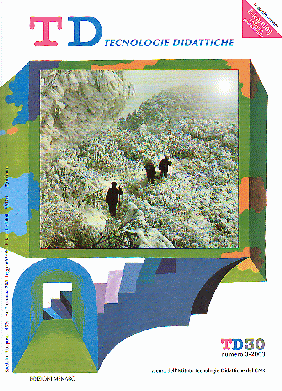The views of teachers
Main Article Content
Abstract
Article Details
Section
Authors who publish with this journal agree to the following terms:
- Authors retain copyright and grant the journal right of first publication with the work simultaneously licensed under a Creative Commons CC BY 4.0 Attribution 4.0 International License.
- Authors are able to enter into separate, additional contractual arrangements for the non-exclusive distribution of the journal's published version of the work (e.g., post it to an institutional repository or publish it in a book), with an acknowledgement of its initial publication in this journal.
- Authors are permitted and encouraged to post their work online (e.g., in institutional repositories or on their website) prior to and during the submission process, as it can lead to productive exchanges, as well as earlier and greater citation of published work (See The Effect of Open Access)
References
Blanton W., Moorman G., Trathen W. (1997), Telecommunications and Teacher Education: A Social Constructivist Review, Review of Research in Education, 23, pp. 235-275.
Bleakley A. (2001), From lifelong learning to lifelong Teaching: teaching as a call to style, Teaching in Higher Education, 6, pp. 113-118.
Bowskill N., Foster J., Lally V., Mc- Connell D. (2000), Networked professional development: Issues and strategies in current practice, The International Journal for Academic Development, 5, pp. 93-106.
Collis B.A. (1997), Implementing ICT in the Faculty: Letting a 1000 Flowers Bloom or Managing Change? in Mirande M., Riemersma J. & W. Veen (eds), De digitale leeromgeving [The virtual learning environment] (pp. 121-135), Groningen, The Netherlands, Wolters- Noordhoff.
Dirks M. (1997), Problems, philosophy, and motivation: Trail blazing instructors for the digital frontier, Journal of Educational Computing Research, 17, pp. 47-65.
Fabry D. L. & Higgs J. R. (1997), Barriers to the effective use of technology in education: Current status, Journal of Educational Computing Research, 17, pp. 385-395.
The Frascatians (2003), Four portraits of the European future of ULEARN, in Midoro V. & Admiraal W. (eds) Pioneer teachers: a key factor in European school innovation, Ed. Menabò, Ortona
Kink M. van der, Kallenberg T., Valcke M. (2002), Veranderende rollen van docent en student, in H. Frencken, J. Nedermeijer, A. Pilot, I. ten Dam (2002), ICT in het hoger onderwijs: stand van zaken [ICT in Higher Education: state of the art], Utrecht, Universiteit Utrecht, IVLOS & Universiteit Leiden, ICLON, pp. 151-170.
Levin J. A., Stuve M. J., Jacobson M. J. (1999), Teachers’ conceptions of the Internet and the World Wide Web: A representational toolkit as a model of expertise, Journal of Educational Computing Research, 21, 1-23.
Lieberman A. (2000), Networks as Learning Communities. Shaping the future of teacher development, Journal of Teacher Education, 51, pp.221-227.
McEwan H. (1997), The function of narrative and research on teaching, Teaching and Teacher Education, 13, pp. 85-92.
Mirande M., Riemersma J., Veen, W. (1997), De digitale leeromgeving [The virtual learning environment], Wolters-Noordhoff, Groningen, the Netherlands.
Morgan D. L. (1993), Successful focus groups, SAGE publications, Newbury Park.
Nicaise M. & Barnes D. (1996), The union of technology, constructivism, and teacher education, Journal of Teacher Education, 47, pp.205-212.
Nicholls G. (2000), Professional development, teaching, and lifelong learning: the implications for higher education, International Journal of Lifelong Education, 19, pp.370-377.
Paulsen M.F. (1995), Moderating educational computer conferences, in Z. L. Berge & M. P. Collins (eds) Computer-Mediated Communications and the online classroom (Vol. III; pp. 83-103), Cresskill, Hampton Press, New York.
Robin B. R. & Harris J. B. (1998), Correlates among computer-using teacher educators’ beliefs, teaching and learning preferences, and demographics, Journal of Educational Computing Research, 18, pp.15-35.
Rogers E. (1995), Diffusion of innovation, The Free Press, New York.
Rosenberg M. J. (2001), E-learning strategies for delivering knowledge in the digital age, Mc- Graw-Hill, New York.
Ross J. A., Hogaboam-Gray A., Hannay L. (1999), Predictors of Teachers’ Confidence in their Ability to Implement Computer-based Instruction, Journal of Educational Computing Research, 21, pp.75- 97.
Ryan S., Scott B., Freeman H., Patel D. (2000), The Virtual University, Kogan Page, London.
Simons P. R. J., Van der Linden J., Duffy T. (2000), New Learning: Three Ways to learn in a new balance, in P. R. J. Simons, J. Van der Linden, T. Duffy (eds), New Learning (pp.1-20), Kluwer Accademic Publishers, Dordrecht, the Netherlands.
Simons P.R.J. (2002), Digitale didactiek: hoe (kunnen) academici leren ICT te gebruiken in hun onderwijs [Digital pedagogy: how teachers (can) learn about the use of ICT in their teaching], inauguration, Universiteit Utrecht, the Netherlands.
Sinko M. & Lehtinen E. (1999), The challenges of ICT in Finnish Education, Atena, Jyväskylä.
Tearle P., Davis N., Birbeck N. (1998), Six case studies of information technology-assisted teaching and learning in higher education in England, Journal of Technology for Teacher Education, 7, pp.51-70.
Worthington V. L. & Zhao Y. (1999), Existential computer anxiety and changes in computer technology: What past research on computer anxiety has missed, Journal of Educational Computing Research, 20, pp.299-315.

